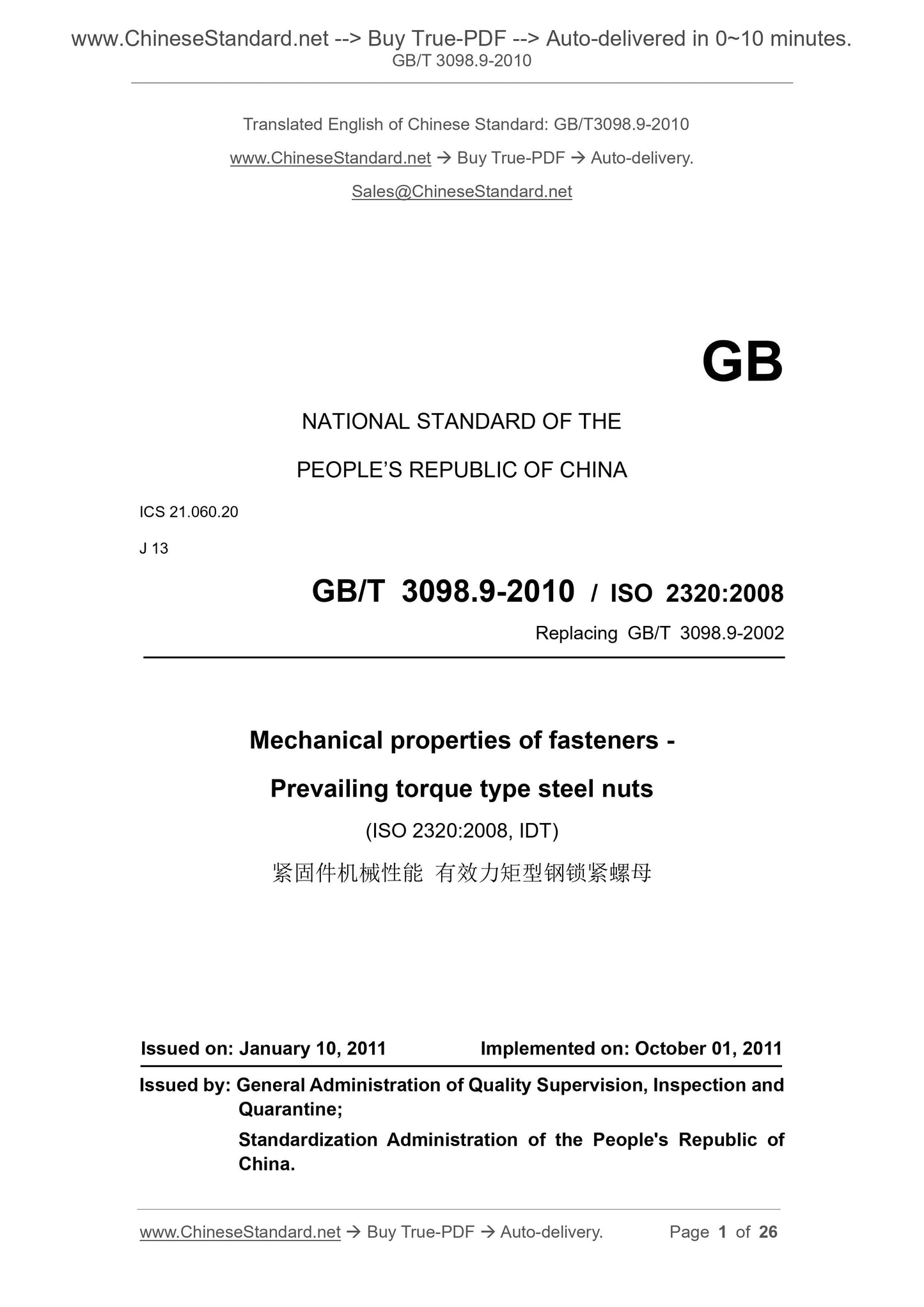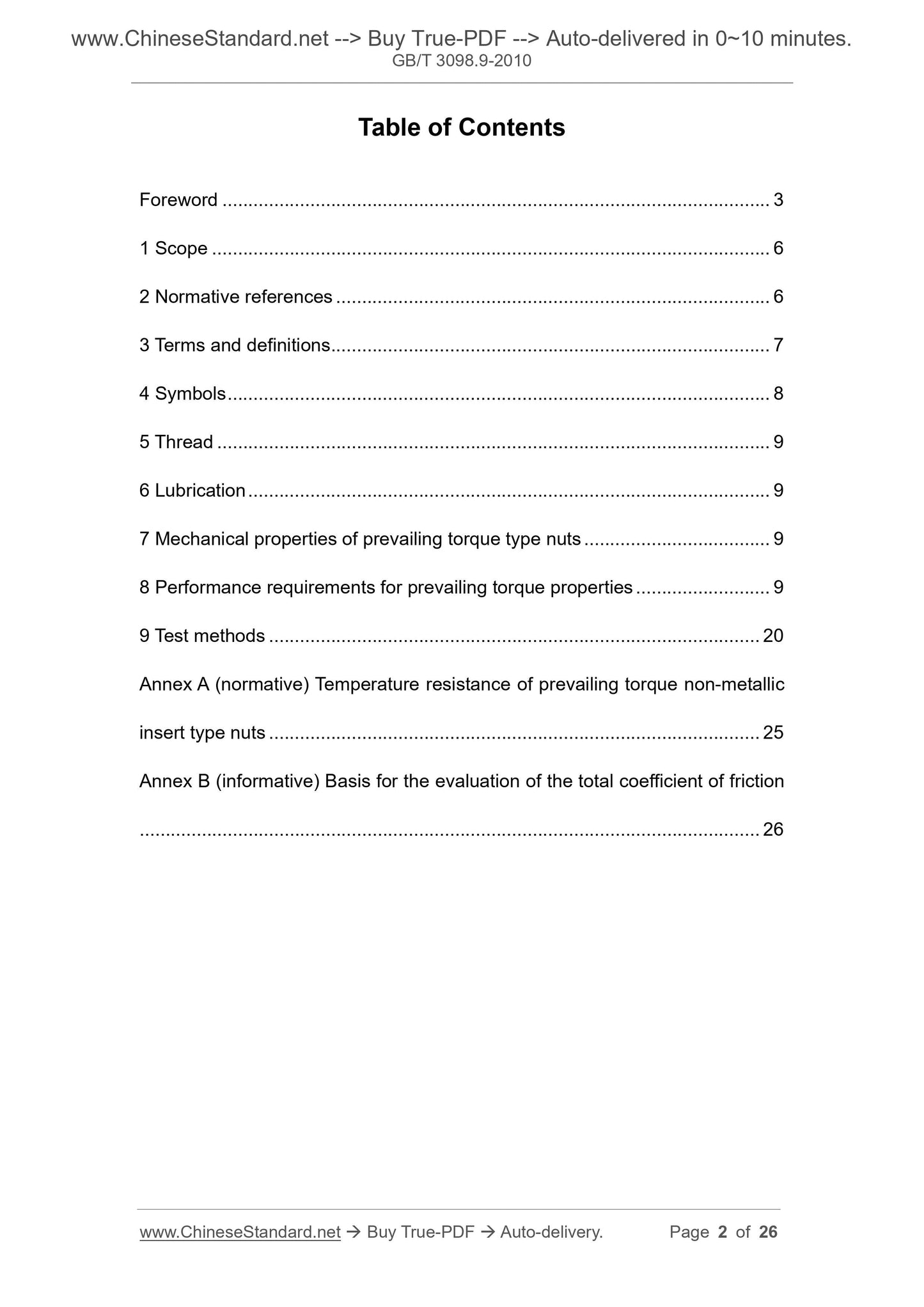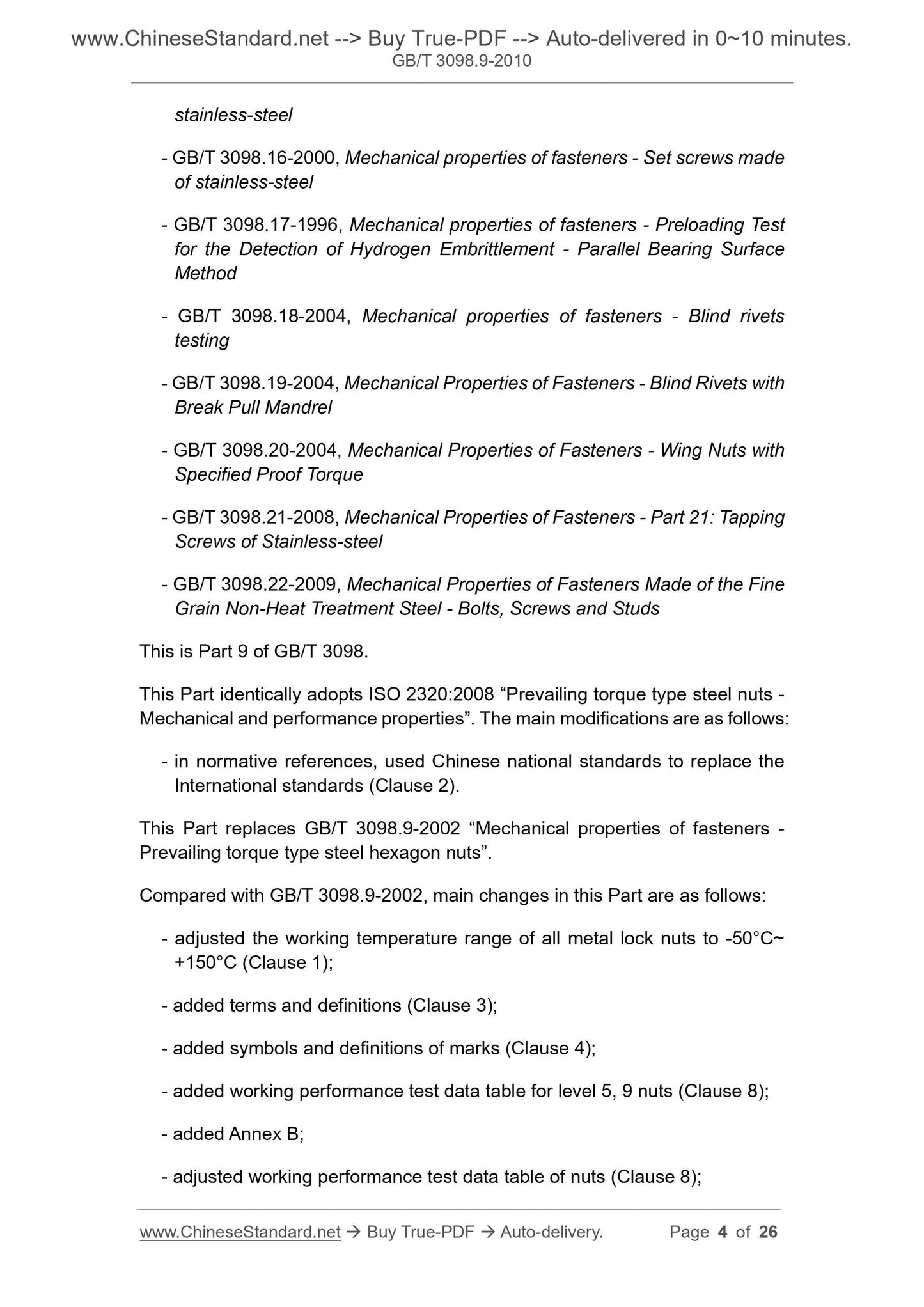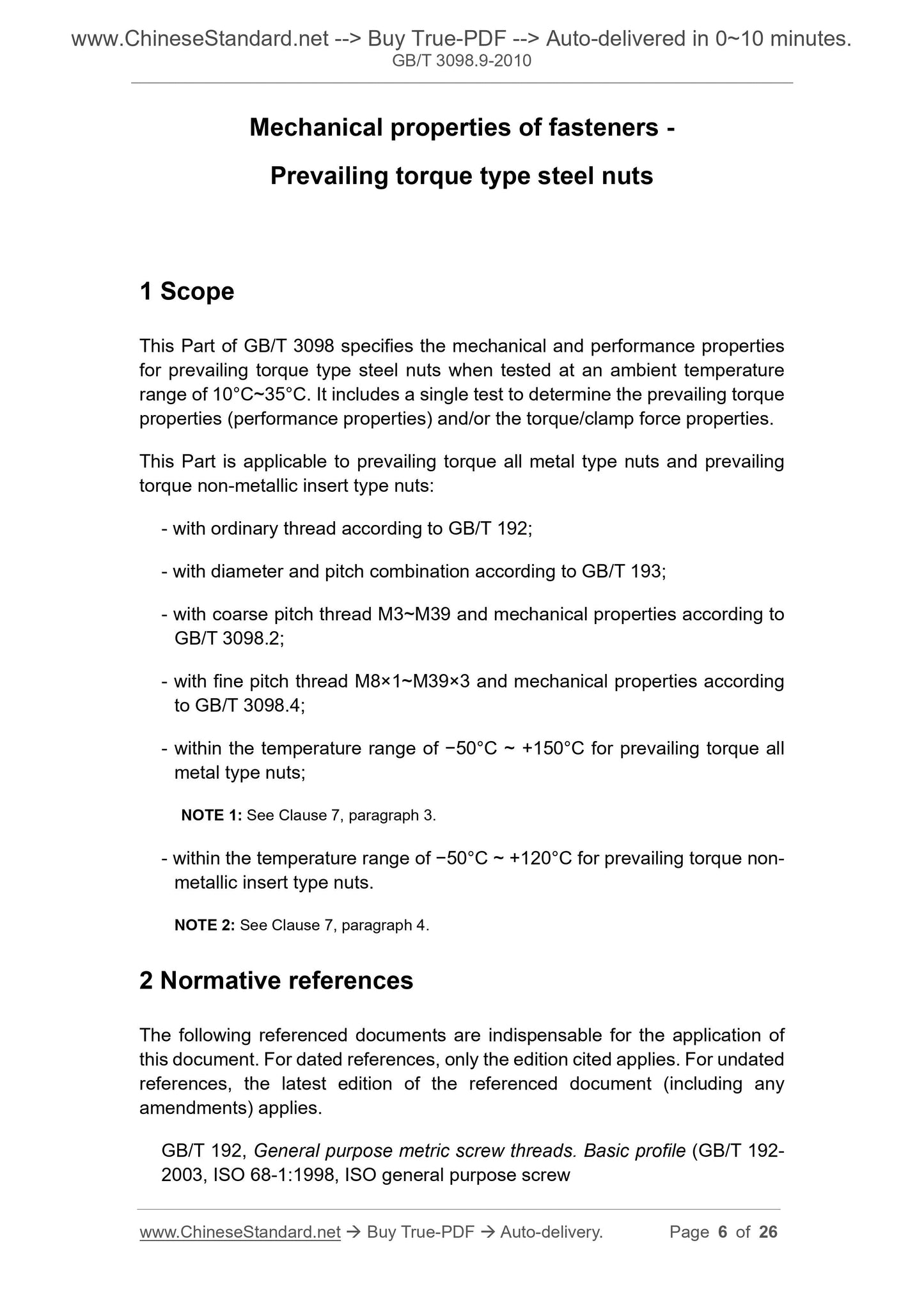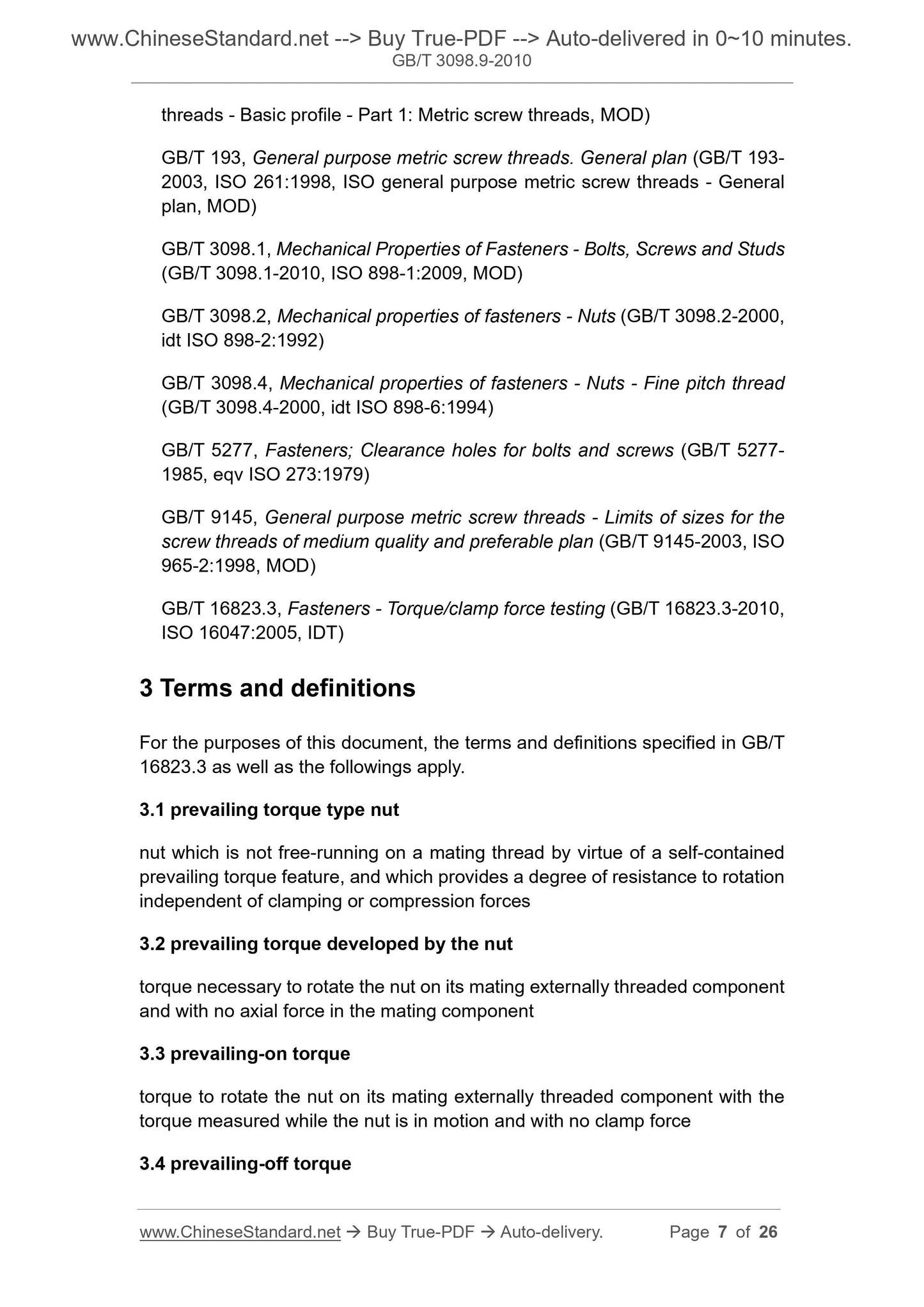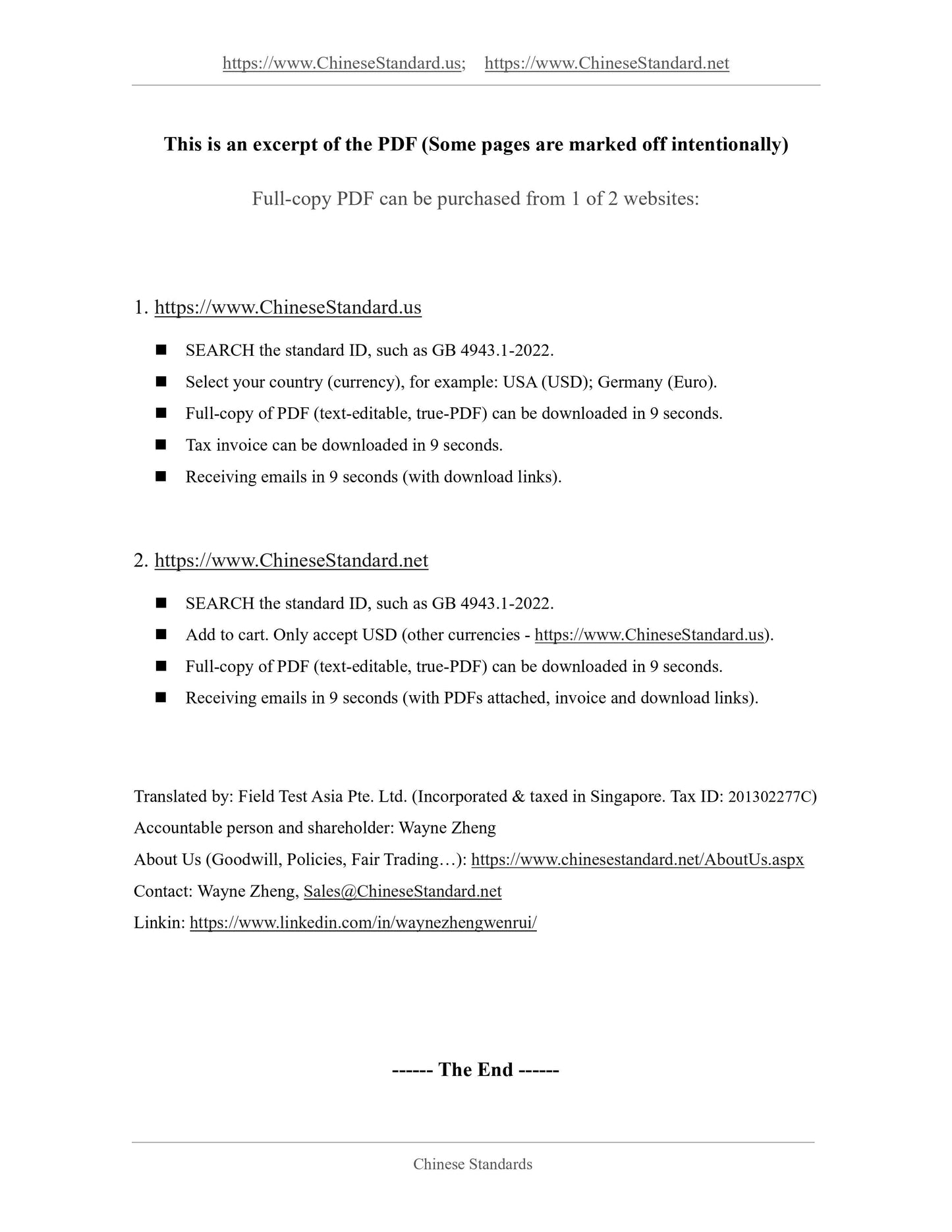1
/
of
7
PayPal, credit cards. Download editable-PDF and invoice in 1 second!
GB/T 3098.9-2010 English PDF (GB/T3098.9-2010)
GB/T 3098.9-2010 English PDF (GB/T3098.9-2010)
Regular price
$150.00
Regular price
Sale price
$150.00
Unit price
/
per
Shipping calculated at checkout.
Couldn't load pickup availability
GB/T 3098.9-2010: Mechanical properties of fasteners -- Prevailing torque type steel nuts
Delivery: 9 seconds. Download (and Email) true-PDF + Invoice.Get Quotation: Click GB/T 3098.9-2010 (Self-service in 1-minute)
Newer / historical versions: GB/T 3098.9-2010
Preview True-PDF
Scope
This part of GB/T 3098 stipulates that when the test is performed under the conditions of ambient temperature of 10 ℃ ~ 35 ℃, the effective torque type steel lock screwThe mechanical and working performance of the female. It includes a single test to determine the effective torque performance (working performance) and/or torque-clamping force performance.
This section applies to effective torque type all-metal lock nuts and non-metal insert lock nuts that meet the following requirements.
--- Ordinary thread conforming to GB/T 192 regulations;
--- A combination of diameter and pitch in accordance with GB/T 193;
--- Thread specifications M3 ~ M39, mechanical properties comply with GB/T 3098.2;
--- Thread specification M8 × 1 ~ M39 × 3, mechanical properties conform to GB/T 3098.4;
--- The working temperature range of effective torque type all metal lock nut is -50 ℃ ~ 150 ℃;
Note 1.See Chapter 7, paragraph 3.
--- The operating temperature range of effective torque type non-metallic insert lock nut is -50 ℃ ~ 120 ℃.
Note 2.See Chapter 7, paragraph 4.
Basic Data
| Standard ID | GB/T 3098.9-2010 (GB/T3098.9-2010) |
| Description (Translated English) | Mechanical properties of fasteners -- Prevailing torque type steel nuts |
| Sector / Industry | National Standard (Recommended) |
| Classification of Chinese Standard | J13 |
| Classification of International Standard | 21.060.20 |
| Word Count Estimation | 24,258 |
| Date of Issue | 1/10/2011 |
| Date of Implementation | 10/1/2011 |
| Older Standard (superseded by this standard) | GB/T 3098.9-2002 |
| Quoted Standard | GB/T 3098.1; GB/T 3098.2; GB/T 3098.4; GB/T 5277; GB/T 9145; GB/T 16823.3; GB/T 192; GB/T 193 |
| Adopted Standard | ISO 2320-2008, IDT |
| Regulation (derived from) | Announcement of Newly Approved National Standards 2011 No. (No. 166 overall) 1 |
| Issuing agency(ies) | General Administration of Quality Supervision, Inspection and Quarantine of the People's Republic of China, Standardization Administration of the People's Republic of China |
| Summary | This Standard specifies when tested at an ambient temperature of 10��C ~ 35��C conditions, the effective torque and mechanical performance steel locking nut. Including single test to determine the effective torque performance (performance) and/or torque - clamping force performance. This Standard is applicable to comply with the following provisions torque type all-metal and non-metallic insert lock nuts lock nuts. |
Share
